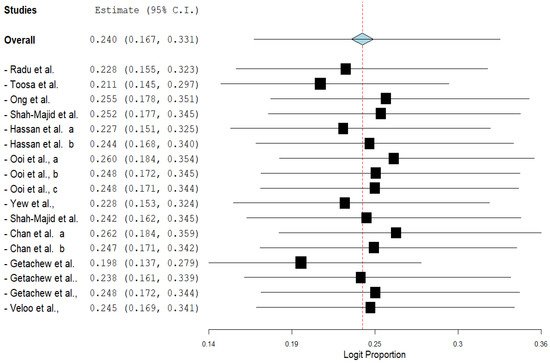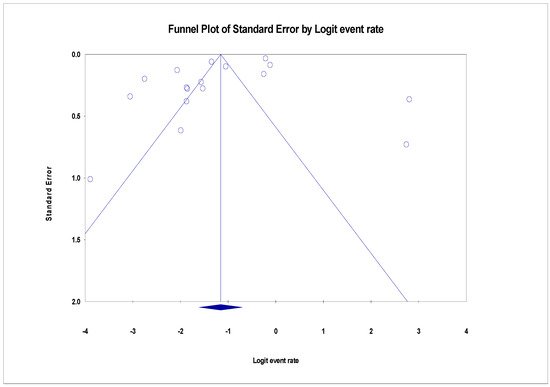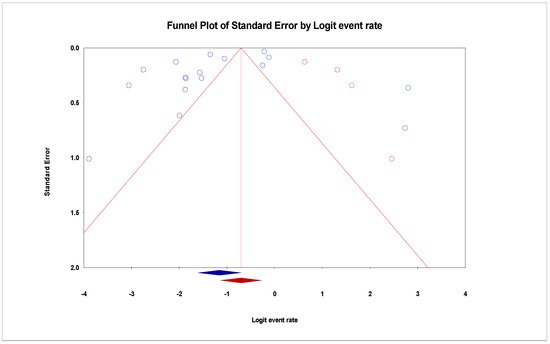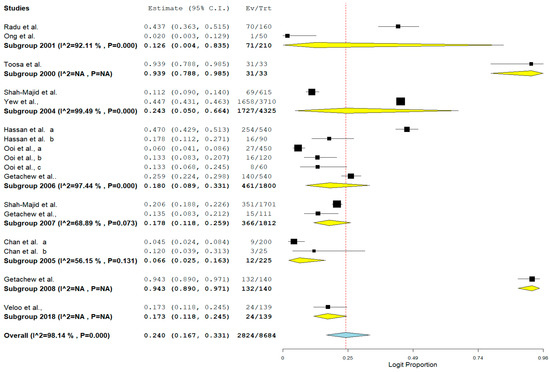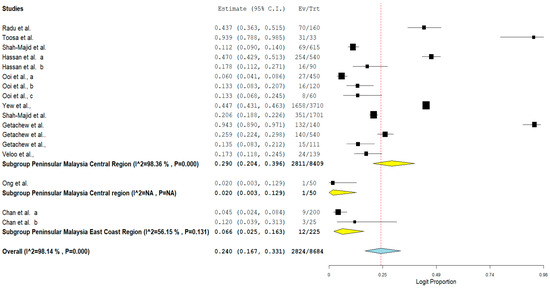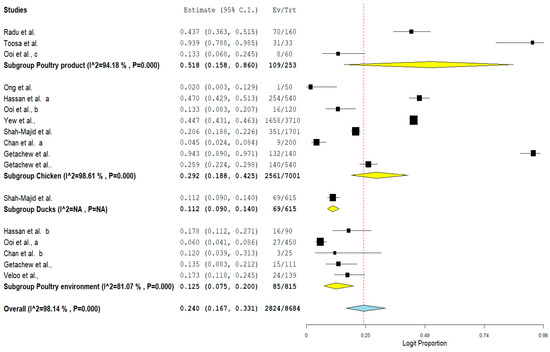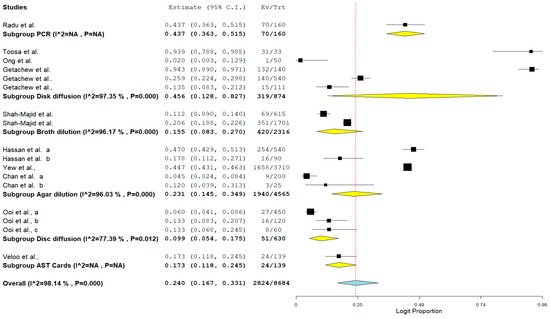Enterococcus has emerged as a significant nosocomial and community-acquired pathogen as a result of its ability to develop resistance to antimicrobials, particularly vancomycin. Vancomycin is the final treatment option, particularly for Enterococcus. There is abundant proof that drug-resistant bacteria exist in poultry and can be transmitted to humans. Regular monitoring of vancomycin-resistant Enterococcus (VRE) in poultry would aid policymakers in developing effective control measures and design antimicrobial resistance (AMR) surveillance capacity building in Malaysia. Further, livestock farmers should be educated on antibiotics resistance and trained on responsible utilization of antibiotics.
1. Introduction
Human antimicrobial use, as well as their use as growth promoters in the livestock industry, were thought to have resulted in the emergence of enterococcal-resistant strains. A good example is the use of avoparcin as a feed additive to promote livestock growth
[1].
The National Pharmaceuticals Regulatory Agency (NPRA) and the Department of Veterinary Services (DVS) in Malaysia have prohibited the use of avoparcin and vancomycin to reduce the spread or prevalence of vancomycin-resistant
Enterococcus (VRE). DVS has been monitoring veterinary drug residues, including antibiotics, in animal feed since 2013, in accordance with EEC Directive 1990
[2]. This will invariably entail the monitoring of two antibiotic groups: group A, which includes banned substances such as avoparcin, chloramphenicol and vancomycin, and group B, which includes drugs with MRLs such as tetracycline. The most frequently used antibiotic classes in Malaysia are aminoglycosides, Beta-Lactams, microlides, tetracyclines, polymyxins, quinolones, sulfonamides and amphenicols
[2]. What has brought VRE to the forefront in Malaysia is not only its critical public health concern but its potential economic impact on the livestock sector
[1]. Antibiotic resistance poses great threat to food safety and public health when the resistant bacteria spread from food animals to poultry farmers, farmworkers and veterinarians through the food chain. As a result, antimicrobial resistance in poultry is a significant public health risk that warrants a discreet yet robust response. VRE has been reported in Malaysia amongst health workers, animals, hospital patients and farmworkers
[1]. The epidemiology and transmission of resistant bacteria between humans and animals has increased, and their zoonotic potential cannot be underestimated
[3].
2. The Pooled Prevalence of VRE in Poultry in Malaysia
The pooled prevalence of VRE in poultry in Malaysia was estimated at 24.0% (95% CI; 16.7–33.1%; I2 = 98.14%; p < 0.001) (Figure 1). Random-effects meta-analyses were carried out using the total sample size and number of positives (effect size, standard error of effect size) to estimate the prevalence of VRE in poultry in Malaysia. Between-study variability was high (t2 = 0.788; heterogeneity I2 = 98.14% with heterogeneity chi-square (Q) = 858.379, degrees of freedom (df) = 16, and p < 0.001). No individual study affected the heterogeneity and pooled prevalence of VRE in poultry in Malaysia as seen in the leave-one-out forest plot that was generated in the sensitivity analysis (Figure 2). More so, publication bias was observed as shown in the asymmetrical funnel plot (Figure 3). In addition to the funnel plots, the Trim-and-Fill method was then applied to include the “missing” studies from the analysis. The asymmetric studies were trimmed to locate the unbiased effect and fills the plot by re-inserting the trimmed studies as well as their imputed counterparts. Accordingly, four studies were missed and fell at the right side of the pooled estimate (Figure 4). In the Trim-and-Fill method, the adjusted estimate of VRE in poultry in Malaysia was 33.12% (95% CI; 24.3–43.3%). The Egger’s regression t = 1.777 (intercept = −4.0972; 95% CI; −0.75–2.57; p = 0.096) and Begg’s rank test (p = 0.30310) did not suggest significant publication bias.
Figure 1. Forest plot showing the pooled prevalence of VRE in poultry in Malaysia.
Figure 2. Leave-one-out forest plot of VRE in poultry in Malaysia.
Figure 3. Funnel plot showing publication bias in studies reporting the prevalence of VRE in in poultry in Malaysia. Studies on the right side are fewer than those on the left and thus asymmetrical. The funnel plot is used for the visualization of bias.
Figure 4. Funnel plot showing 4 added studies (in Red) in the Trim-and-Fill method reporting the prevalence of VRE in in poultry in Malaysia. This method simply looks for missing studies that will eventually eliminate bias. In this case, 4 studies will have to be added to the right side for the plot to be symmetrical.
3. Subgroup Meta-Analysis
To identify the possible sources of heterogeneity among studies, as substantial heterogeneity was observed, subgroup analysis was carried out using the year of study of the included studies, the regions where the studies were reported, the sources of VRE isolates and the method used in detecting VRE.
The result of subgroup meta-analysis by study year revealed overall large variability in studies reporting the prevalence of VRE (the Higgins I2 statistic = 98.14% with heterogeneity chi-square (Q) = 858.379, degrees of freedom = 16, and p < 0.001). However, most studies (n = 6) were reported in 2006 with only a single study reported as recently as 2018 and published in 2020. Studies carried out in 2005 (n = 2) and 2004 (n = 2) had a moderate (I2 = 56.15%) and highest (I2 = 99.49%) heterogeneity respectively. The forest plot for subgroup meta-analysis by study year is also shown in Figure 5.
Figure 5. Forest plot showing the subgroup meta-analysis by study year of VRE in poultry in Malaysia.
The result of subgroup meta-analysis by study region showed that majority of the studies (n = 14) that reported the prevalence of VRE in poultry in Malaysia were from the Central region of Peninsular Malaysia with a prevalence of 29% and a high heterogeneity (I2 = 98.36%). The East coast region of the Malaysian Peninsular only had 2 studies with a prevalence of 6.6% and a moderate heterogeneity (I2 = 56.15%). In addition, the forest plot of subgroup meta-analysis by study region is shown in Figure 6.
Figure 6. Forest plot showing the subgroup meta-analysis by study region of VRE in poultry in Malaysia.
Furthermore, the result of subgroup meta-analysis according to isolate sources revealed that most of the studies (n = 8) had their VRE isolated from chicken with a prevalence of 29.2% and a high heterogeneity (I2 = 98.61%). This was followed by 5 studies reporting the isolation of VRE from poultry environment with a prevalence of 12.5% and also a high heterogeneity (I2 = 81.07%). The forest plot is also shown in Figure 7.
Figure 7. Forest plot showing the subgroup meta-analysis by Isolate sources of VRE in poultry in Malaysia.
Lastly, the result of subgroup meta-analysis according to the detection method showed that 5 studies each utilized disc diffusion and agar dilution with a prevalence of 45.6% and 23.1%, respectively. Only one study utilized polymerase chain reaction (PCR) as a method of detection with a prevalence of 43.7% and CI of 36.3–51.5%. The forest plot is shown in Figure 8.
Figure 8. Forest plot showing the subgroup meta-analysis by detection method of VRE in poultry in Malaysia.
4. Meta-Regression
A separate meta-analysis was performed for each variable included and these are: the study year; the study region; the isolate source; and the detection method. A multivariate meta-regression analysis was utilized when the p-values of the variables in a single meta-regression is <0.25. In the final meta-analysis, all the variables listed were included. In the multivariate meta-regression, no analysis was recorded for studies carried out in 2007, 2008 and 2018. Most of the variables analyzed using multivariate meta-regression contributed to the heterogeneity observed with a p-value of <0.05. Exceptions to these were studies whose isolates were from poultry products (p = 0.0873) and chicken (p = 0.520), study that utilized the use of AST cards as its detection methods (p = 0.427) and a study carried out in the year 2000 (p = 0.994).
5. Species Distribution of Enterococcus in Poultry in Malaysia
Nine species of
Enterococcus were isolated in 11 studies reporting the prevalence of VRE in poultry in Malaysia, while 2 studies
[4][5] did not report the species of
Enterococcus isolated.
Enterococcus faecalis was the most isolated (
n = 563) and this was followed by
E. faecium with 201 isolates.
This entry is adapted from the peer-reviewed paper 10.3390/antibiotics11020171

